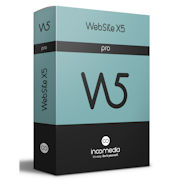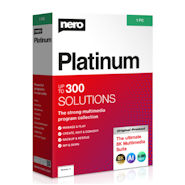 Cloud services like ChatGPT, Le Chat, Leonardo.ai, Gemini, and many others are practical and easily accessible anytime online. But some people want to stay independent, protect their data, and remain flexible. For that, local AI models are the way to go—even if only for specific tasks.But what requirements does your system need to meet so your notebook or desktop PC can handle demanding AI applications? In this guide, you’ll learn everything about processors, graphics cards, memory, and recommended setups for AI language models, image generation, and more. Of course, it all depends on the applications you plan to run.
Cloud services like ChatGPT, Le Chat, Leonardo.ai, Gemini, and many others are practical and easily accessible anytime online. But some people want to stay independent, protect their data, and remain flexible. For that, local AI models are the way to go—even if only for specific tasks.But what requirements does your system need to meet so your notebook or desktop PC can handle demanding AI applications? In this guide, you’ll learn everything about processors, graphics cards, memory, and recommended setups for AI language models, image generation, and more. Of course, it all depends on the applications you plan to run.
Why Use Local AI?
Why even bother with local AI applications? A fair question, but here are some clear answers:
- Privacy: full control over your data
- Independence: no cloud access or subscriptions needed
- Performance: modern hardware is powerful enough
- Unlimited creativity: no rules limiting your generations
And all of this comes without monthly fees for cloud usage, which often come with strict limits. Of course, local AI requires more effort—you need to install and update software yourself. It costs time, sometimes nerves, and a skill that feels forgotten in the AI age: using your own brain and a bit of knowledge.
Which AI Applications Can Run Locally?
Just a few popular examples—the list is much longer:
- Text: GPT4All, Mistral, Llama.cpp
- Image: Stable Diffusion, ComfyUI
- Text-to-Speech: Coqui TTS, Bark
- Text-to-Video: Zeroscope, Pika Labs
More Tools for Local AI Graphics
Beyond the core setups, there are also specialized tools that benefit greatly from a strong local PC environment. Two exciting examples are Vision FX 2.0 and Corel Vector FX, both designed for creative users who prefer to work without the limits of the cloud.
Vision FX 2.0 turns photos into artistic creations entirely on your PC. It runs fully offline, comes as a one-time license without extra fees, and makes the most of at least 32 GB RAM, a modern processor, and ideally an NVIDIA GPU with 12 GB VRAM.
Corel Vector FX focuses on locally generated vector graphics. With text prompts and fine-tuning options, it allows precise design work while remaining completely cloud-free. As with Vision FX 2.0, a system with 32 GB RAM and a CUDA-enabled NVIDIA GPU is strongly recommended.
Processors with AI Power: Ryzen AI Max & Intel Core Ultra
The latest CPUs feature integrated NPUs (Neural Processing Units) to accelerate AI processes—perfect for Windows Copilot+, smaller models, and audio tasks.
Recommendations:
- AMD Ryzen AI 300 “Strix Point” or newer / AMD Ryzen 9000 “Granite Ridge” desktop CPUs
- Intel Core Ultra 200V (Lunar Lake) for laptops / Intel Core Ultra 200 (Arrow Lake) desktop CPUs
The Right Graphics Card: NVIDIA Still Leads
NVIDIA GPUs dominate not just graphics but also AI workloads. For image and video generation, VRAM is the key factor. CUDA-based NVIDIA GPUs remain the gold standard.
GPU Recommendations 2025:
- Entry-level: RTX 4060 / 4070
- Advanced: RTX 4080 / 4090
- Professional: RTX 5090, RTX A6000
RAM, SSD & More: The Foundation for Smooth AI Workflows
More is always better—no surprise here:
- RAM: at least 32 GB, preferably 64 GB+
- Storage: 1–2 TB NVMe SSD with PCIe 4.0/5.0
- Cooling & PSU: often overlooked but critical. Overheating systems crash just like exhausted humans.
Example Setups for Local AI
These setups can help you get started or scale up to professional local AI use:
Entry-Level Setup
- Ryzen 7 5700X
- RTX 3060 12 GB
- 32 GB RAM
- 1 TB SSD
Creator Setup
- Intel i7-14700K
- RTX 4070 Ti / 4080
- 64 GB RAM
- 2 TB SSD
Professional Setup
- Ryzen 9 7950X
- RTX 5090
- 128 GB RAM
- 2× 2 TB SSD
Prices typically start around €1,000 for entry-level, €2,000 for creator, and €3,000+ for professional builds—sometimes less if you find good deals.
Additional Tips for Your Local AI
- Update NVIDIA drivers regularly
- Use frameworks like ComfyUI and Oobabooga
- Consider virtualization tools like Docker for clean installs
Conclusion
With the right hardware, you’re ready for the next stage of AI use—completely cloud-free, but with full power. Of course, it requires some investment. Just imagine being able to run text-to-video locally, with unlimited tries and without online service costs or restrictions—that’s pretty exciting.



 Create professional websites and online shops without programming:
Create professional websites and online shops without programming:

